No products in the cart.
1771 Crusader shield
Following the traditional construction methods, our Medieval Shields are formed with thin (16) layers of wood, each individually shaped and pressed for durability. The compounded layers not only ads durability in comparison to a single, thicker layer, but also provides greater strength with lesser weight. Each layer is soaked and individually pressed to shape, eventually creating one solid defensive wall. We covered the heater shields in heavy cotton. Decorative rivets are set and topped off with a wood grip, closed cell foam backing covered in full grain leather, and adjustable forearm strap.
Each shield is 30″ x 22″ and weighs 5 lbs 2 oz.
USD495.00
Category: Medieval Shields
Even though many wars have been fought in the name of religion, more than most wars of the last two thousand years the Crusades are the most widely acknowledged example of a holy war – so much so that when we talk about a cause in which someone strongly believes, we often call it a Crusade. By themselves the Crusades might seem like unremarkable conflicts – after all, there had been wars in the Holy Land for centuries before they started (if not longer).
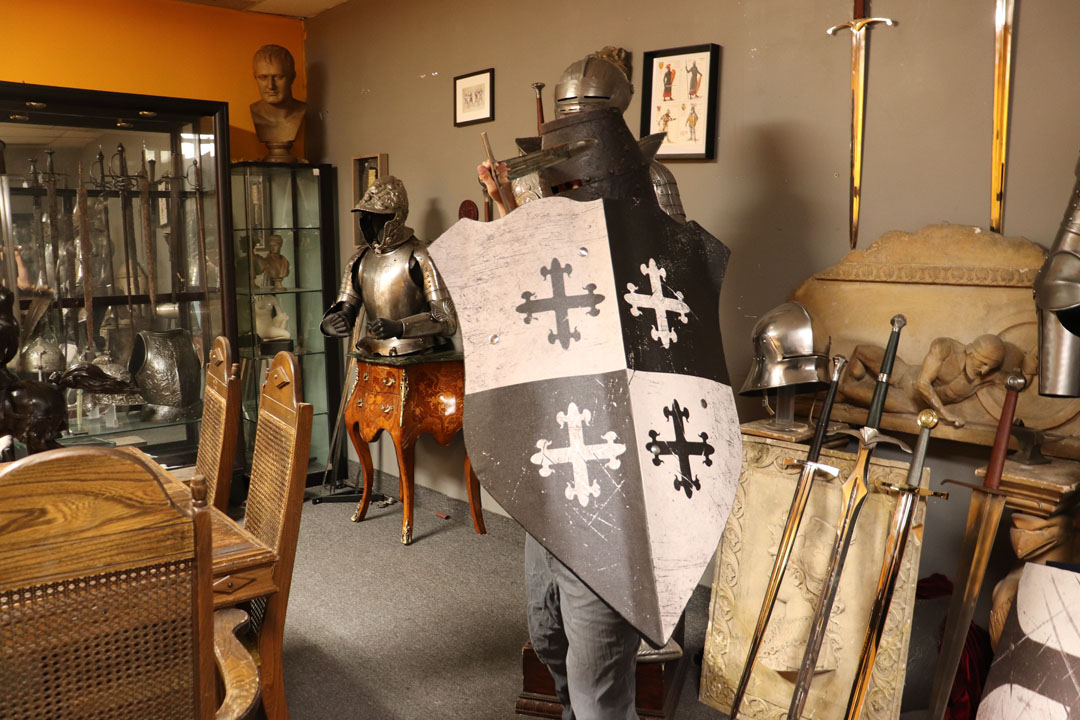 What made the Crusades unique was two things. First, was the breadth of support from multiple conflicting nations in coming together to support a single cause- perhaps the first time in which so many across Christian Europe had united in favor of a unified goal. Second, was the sustained recurrence of their initiation – that is, there were multiple Crusades sanctioned by the Roman Catholic Church over a period of several centuries directed towards the liberation and control of Jerusalem and the surrounding territories. Beginning in the late 11th century and extending well into the 13th century at least, the Crusades were campaigns to “free” the Holy Land from Islamic control initiated by the church and supported financially and militarily by the fighting forces of multiple Nations. In 1095 CE, Pope Urban II proclaimed the Crusades at the Council of Claremont, which kicked off a rush of supporters to their banners. Ostensibly an “armed pilgrimage” to the City of God, Crusaders were granted broad liberty to loot, pillage, and slaughter their way to the walls of Jerusalem. Even better, participants in these Crusades were considered to be engaging in acts of penitence while they did so, and according to Urban would therefore earn their salvation and forgiveness for sins committed along the way. This may have resulted in a campaign of violence not only against Islamic forces but against anybody they met along the way, including the slaughtering of German Jewish communities during the Rhineland massacres in 1096 and multiple other atrocities.
What made the Crusades unique was two things. First, was the breadth of support from multiple conflicting nations in coming together to support a single cause- perhaps the first time in which so many across Christian Europe had united in favor of a unified goal. Second, was the sustained recurrence of their initiation – that is, there were multiple Crusades sanctioned by the Roman Catholic Church over a period of several centuries directed towards the liberation and control of Jerusalem and the surrounding territories. Beginning in the late 11th century and extending well into the 13th century at least, the Crusades were campaigns to “free” the Holy Land from Islamic control initiated by the church and supported financially and militarily by the fighting forces of multiple Nations. In 1095 CE, Pope Urban II proclaimed the Crusades at the Council of Claremont, which kicked off a rush of supporters to their banners. Ostensibly an “armed pilgrimage” to the City of God, Crusaders were granted broad liberty to loot, pillage, and slaughter their way to the walls of Jerusalem. Even better, participants in these Crusades were considered to be engaging in acts of penitence while they did so, and according to Urban would therefore earn their salvation and forgiveness for sins committed along the way. This may have resulted in a campaign of violence not only against Islamic forces but against anybody they met along the way, including the slaughtering of German Jewish communities during the Rhineland massacres in 1096 and multiple other atrocities.
As thess were conflicts supported and directed by the Christian church, many who participated considered it to be a holy calling to join in the fray. As a result, the symbolism chosen by the Crusaders often trended towards Christian or biblical symbolism. Multiple versions of the Christian cross, for instance, were developed with different artistic flares and cultural implications. One of these crosses was the Jerusalem Cross, in which four crosses are placed in quadrants around a larger cross shape. Occasionally, the crosses that make up the Jerusalem Cross may be in the stylized form known as the cross potent, or crutch cross- simply put, crosses with equal lengths all round, and with bars at the ends of each arm. This Crusaders Shield is designed with the Jerusalem cross as it’s inspiration. Four stylized crutch crosses are depicted in alternating black and white quadrants, dividing the shield in four around the central focal point. This would have been a design recognizable on the battlefield as belonging to a Crusader, and while those times are thankfully long past we hope you can appreciate the artistry that went into the design.
Custom Shields:
We can do the custom shield, however, we need a vector file with a 300 dpi format.
The size of the image should be 21.333 inches in width x 26.458 inches in height.
There are no returns on custom Shields.
Please contact us by email for more information on this.
Be the first to review “1771 Crusader shield” Cancel reply
This site uses Akismet to reduce spam. Learn how your comment data is processed.



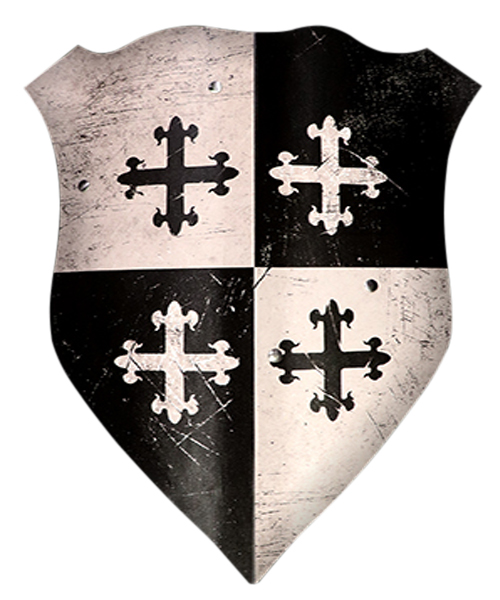
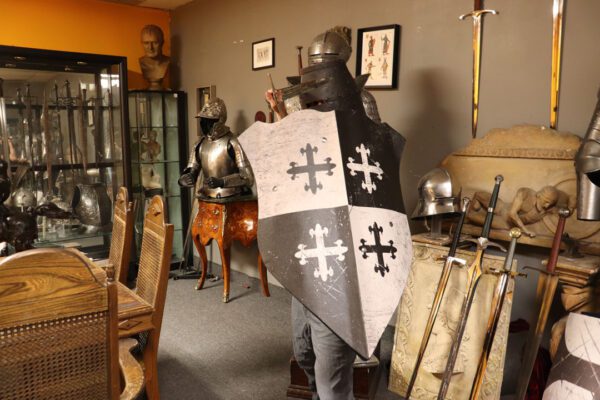
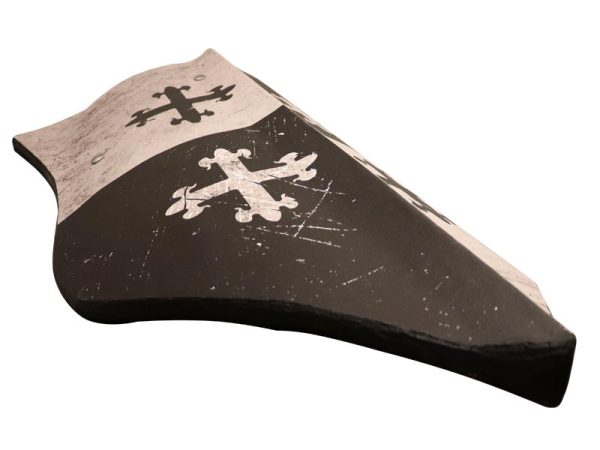
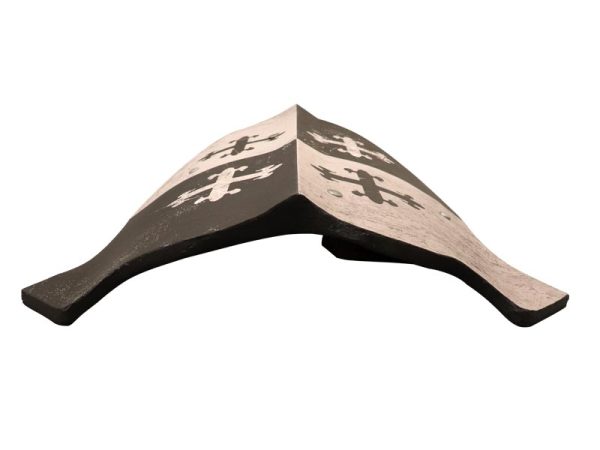
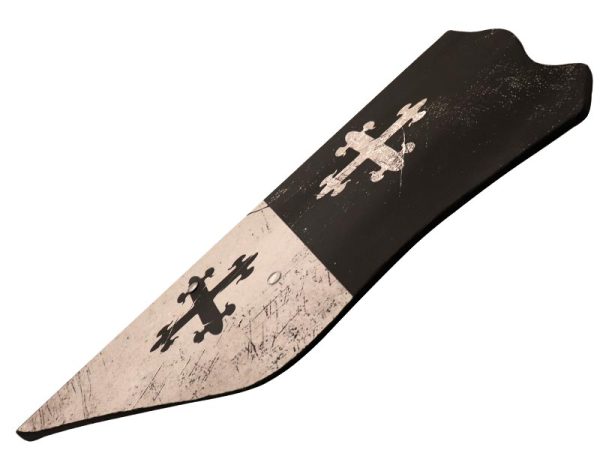
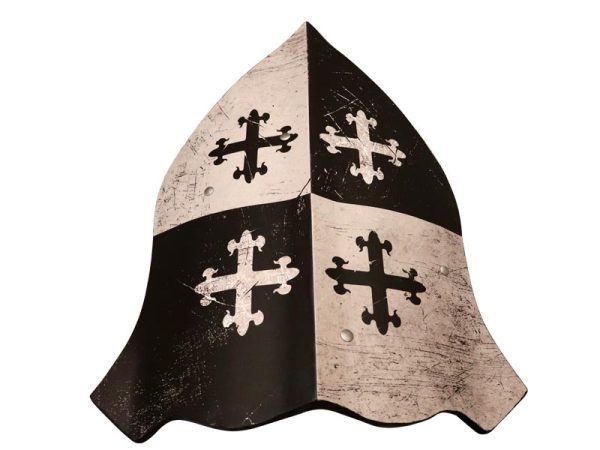
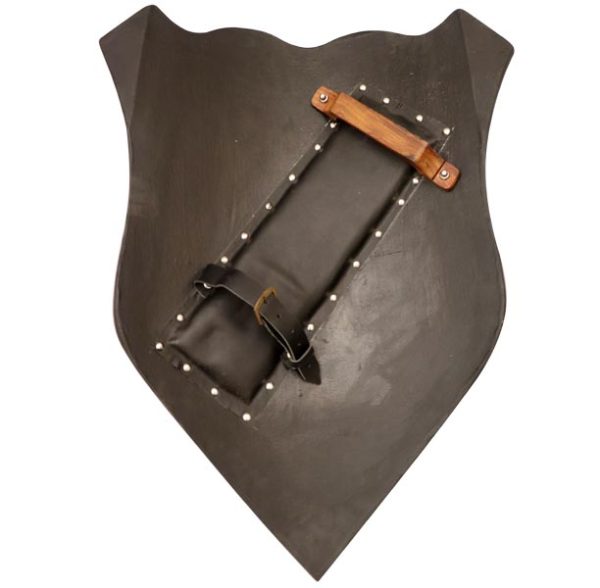
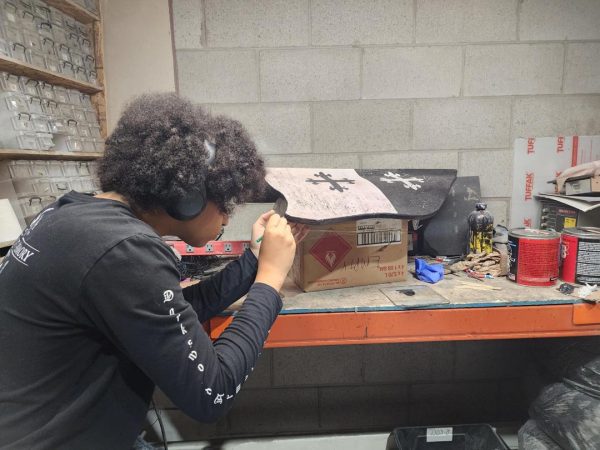

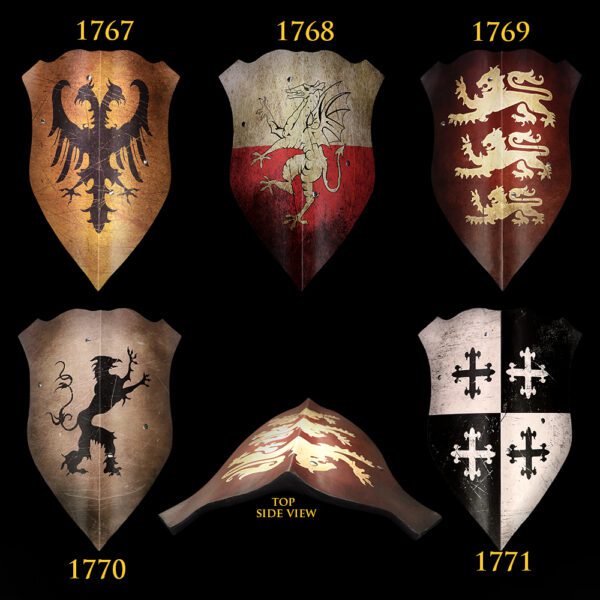
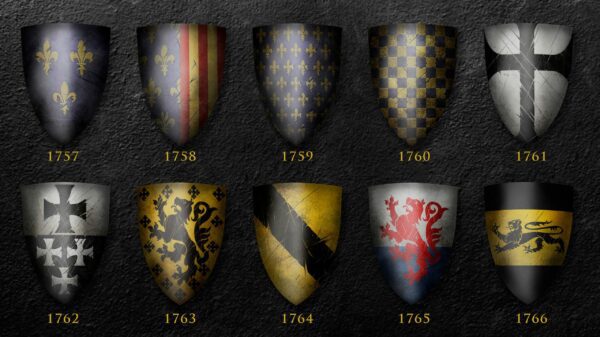
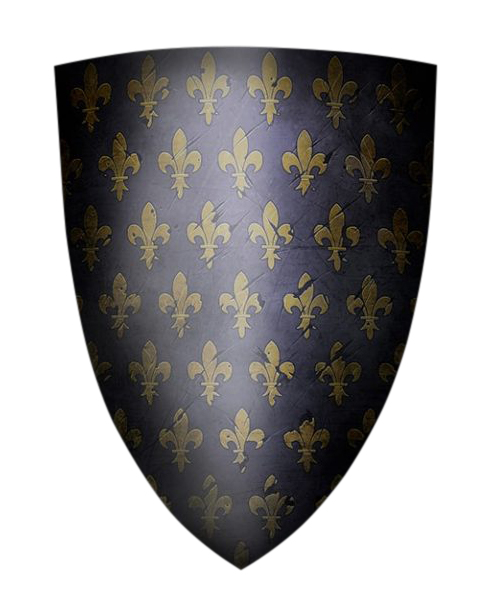
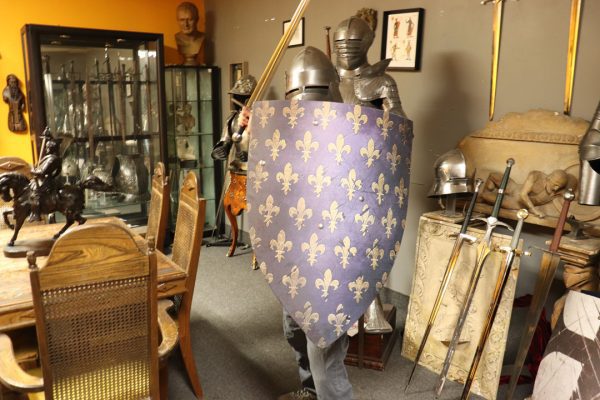
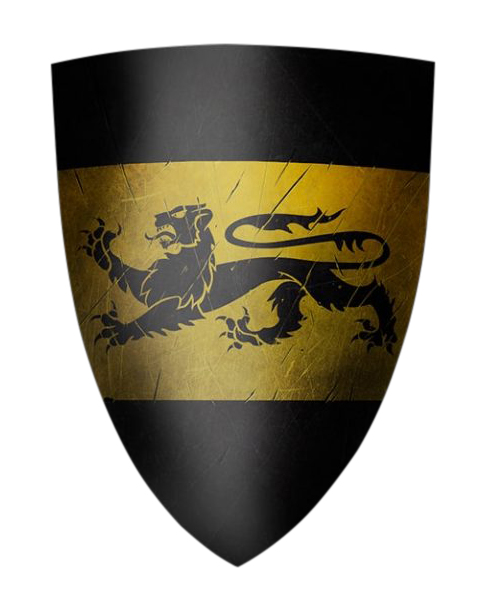
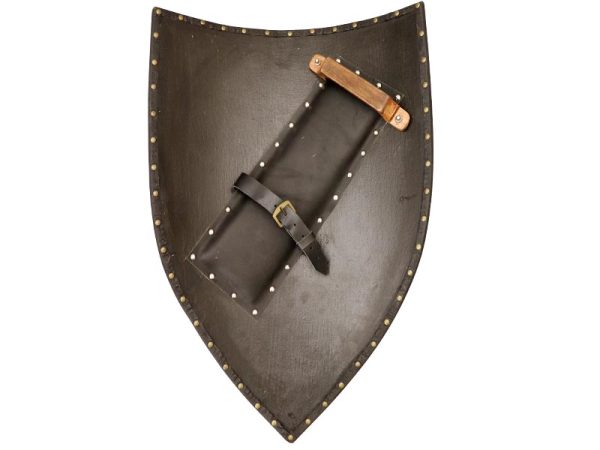
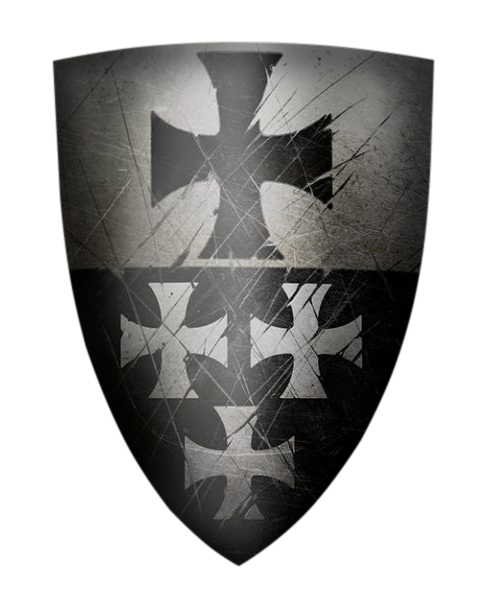
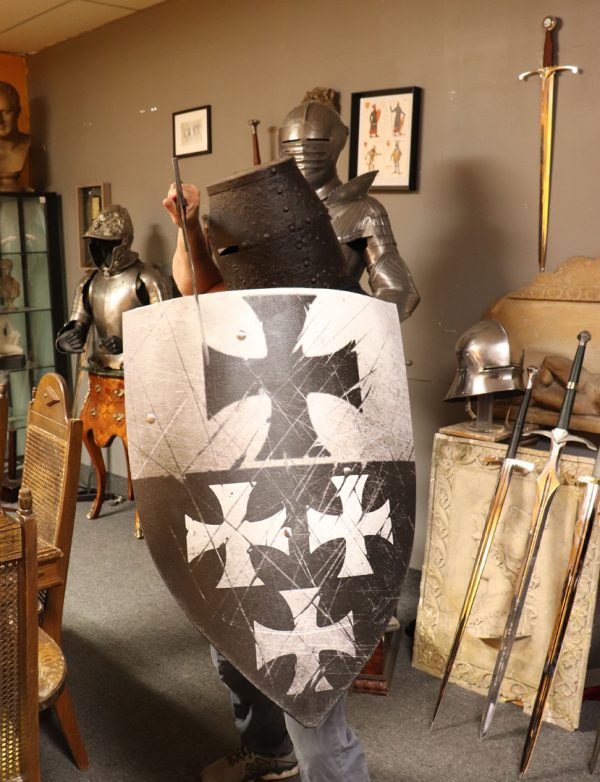
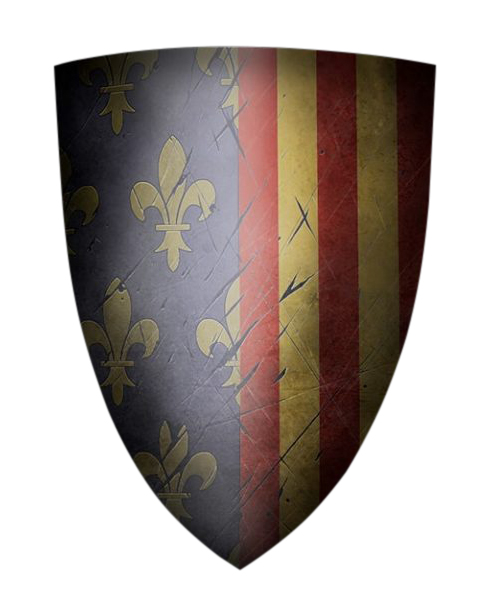
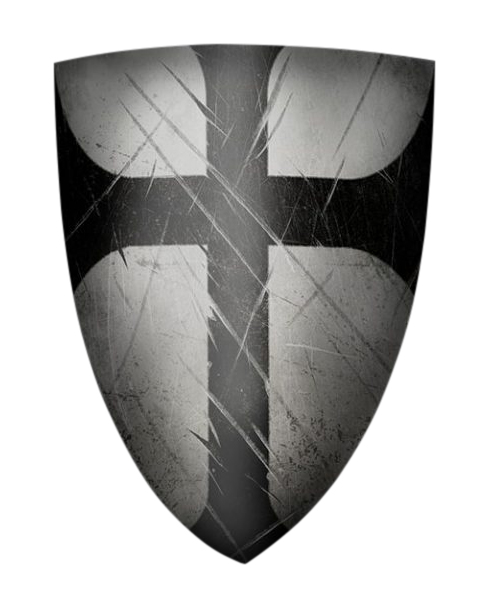

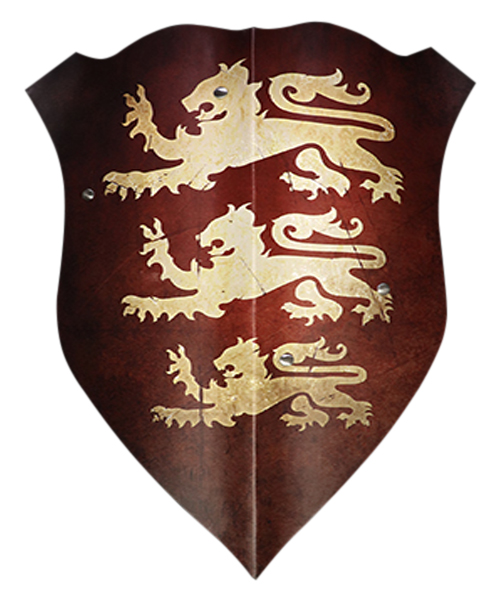
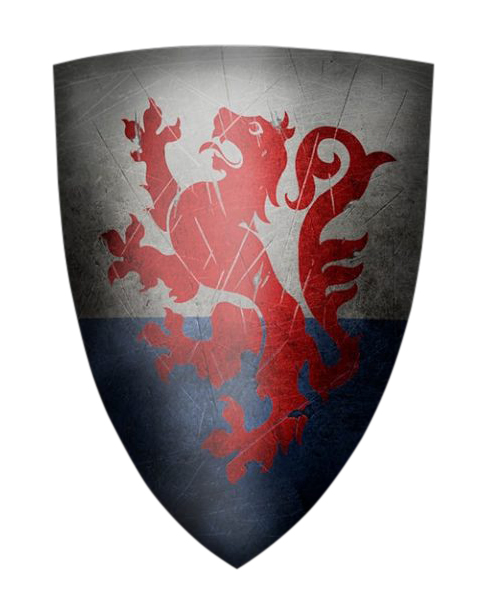
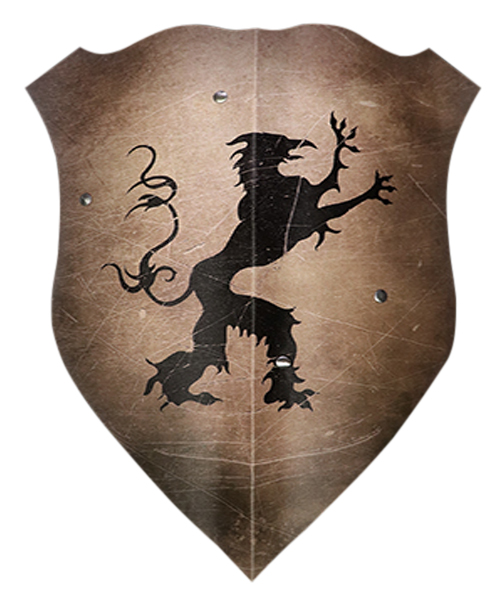
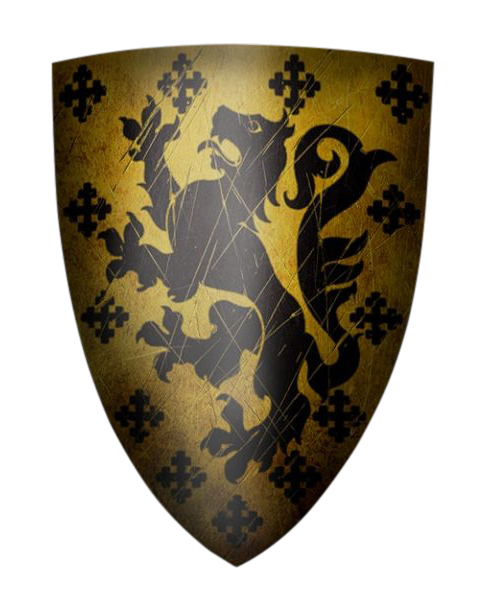
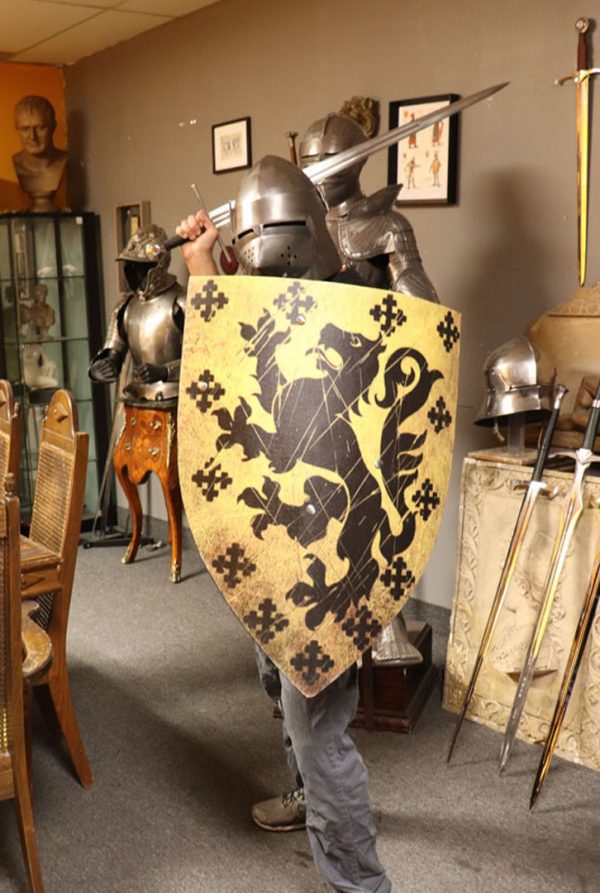
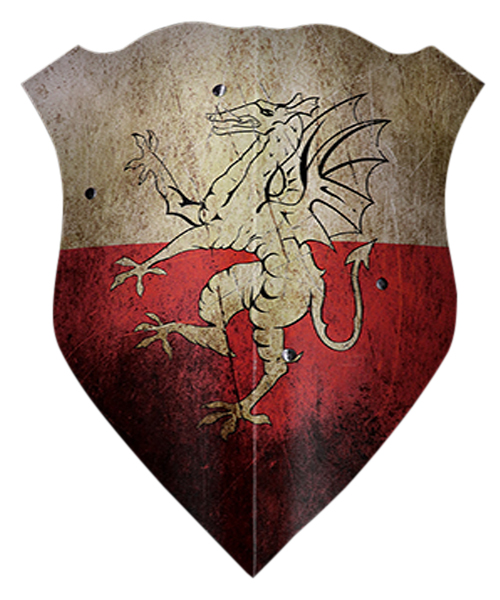
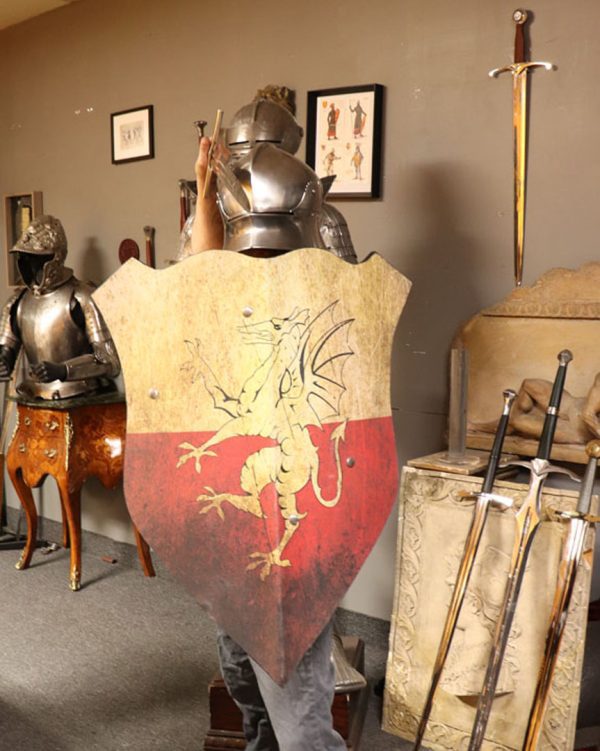
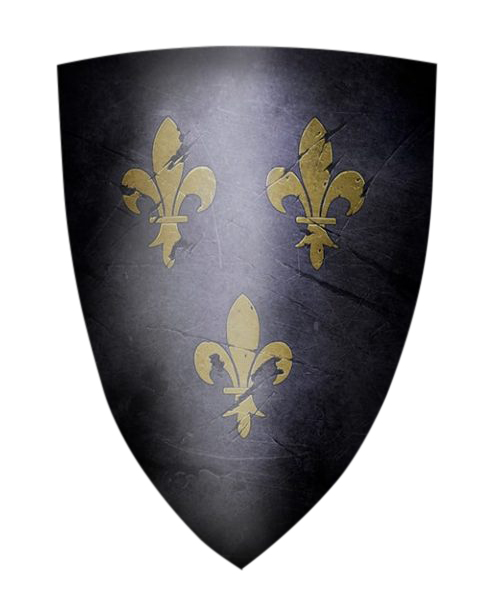
Reviews
There are no reviews yet.